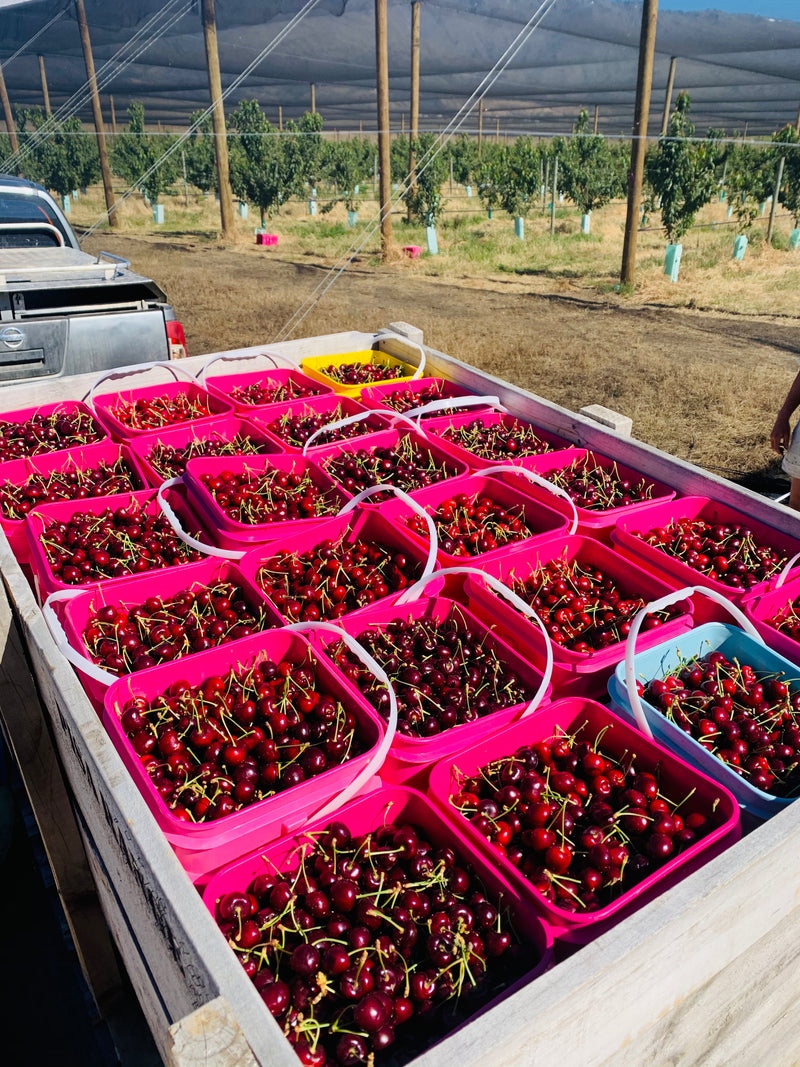Cherries, with their vibrant hues and deliciously sweet taste, are much adored by many fruit lovers. However, a common issue that can spoil the joy of cherries is cracking. This problem not only affects their appearance but can also impact their taste and shelf life. Understanding why cherries crack is so important for growers and consumers alike, as it helps in minimizing waste and maximizing enjoyment.
Cherry cracking occurs more frequently than one might think, and various factors contribute to this phenomenon. It usually happens when conditions aren't ideal, which can make cherries vulnerable. We'll explore these causes and offer some insights on how you can prevent this from happening to your precious cherries, ensuring that they remain in perfect condition.
Understanding Cherry Cracking
Cherry cracking is a condition where the skin of the cherry splits open, usually during the final stages of ripening. This not only affects the fruit's appearance but also makes it susceptible to decay and spoilage. The main culprit behind cherry cracking is excess moisture, which can come from rain, irrigation, or even high humidity levels. When cherries absorb too much water, their skin can't stretch enough to accommodate the increased internal pressure, leading to splits.
Several weather-related conditions make cherries prone to cracking. For instance, when it rains close to the harvest period, cherries can soak up a significant amount of water quickly. Similarly, misty mornings followed by hot afternoons can create a perfect environment for skins to crack under pressure.
Varieties Prone to Cracking
Some cherry varieties are more prone to cracking than others. Here's a quick look at those typically affected:
- Bing Cherries: Known for their sweetness, they can easily crack with unexpected rainfall.
- Rainer Cherries: Their delicate skins make them more susceptible, especially in higher humidity.
- Lapins Cherries: While more resistant than others, they aren't immune to harsh weather patterns.
Some newer cherry varieties have been bred to resist cracking more effectively, but even these need care during adverse weather.
Preventive Measures for Cherry Cracking
To keep cherries in top condition, being proactive with preventive measures is key. One of the most straightforward ways to avoid cracking is through proper irrigation practices. When watering cherry trees, ensure it's done consistently and sparingly, as over-watering can lead to unwanted moisture build-up in the fruit. Well-drained soil is also crucial, as it prevents water from lingering around the roots, which could otherwise contribute to an excess of moisture.
In addition to careful watering, the use of protective covers can be a game-changer during times of heavy rainfall. These covers act as a barrier, shielding cherries from direct rain, thus reducing the chance of them absorbing too much water at once. Nets can also be advantageous as they allow airflow while protecting against problematic weather conditions.
Keeping abreast of the weather forecast is another practical step. When anticipating rain close to harvest, deploying rain shelters can help keep your cherries safe. Pruning trees properly ensures even sunlight exposure and air circulation, reducing humidity around the fruit itself.
When Cracking Occurs: What to Do
If you find yourself with cracked cherries, don't despair. While the aesthetic might not be perfect, there are still plenty of ways to make the most of them. First, separate the cracked cherries from the intact ones to avoid hastening spoilage. Keep them in a separate container and consume them sooner rather than later.
Here are some suggestions for using cracked cherries creatively:
- Smoothies: Blend them up for a refreshing drink.
- Cakes and Muffins: Add them to baked goods for a burst of flavor.
- Sauces: Use them in compotes or sauces, where appearance isn't as crucial.
Cracked cherries still maintain their taste and nutritional value, so getting inventive with your recipes can turn a potential loss into a delightful treat.
Stay Crack-Free: Tips for Cherry Lovers
For cherry enthusiasts who want to enjoy the fruit without the hassle of cracking, selecting high-quality cherries is the first step. When shopping, look for cherries with firm, glossy skins and no visible damage. This simple measure goes a long way in ensuring you bring home top-notch produce.
Proper storage is another often overlooked aspect of maintaining cherry quality. Always keep cherries refrigerated and unwashed until you're ready to enjoy them. Washing ahead of time can introduce moisture that encourages splitting and spoilage.
Finally, choosing cherries from reputable sources guarantees you're getting the best possible product. Reliable suppliers often go the extra mile to ensure their cherries are less prone to cracking by following sustainable cultivation practices.
Remember, guarding against cherry cracking with these practical measures not only saves on waste but also enhances your overall enjoyment of this beloved fruit. By understanding its causes and implementing these easy tips, you're well on your way to enjoying a crack-free cherry experience.
Whether you're a cherry grower or an enthusiast, understanding how to protect your cherries in NZ from cracking ensures they stay delicious and fresh. If you're looking to enjoy high-quality cherries that meet your expectations, check out Pure Organic Cherries for a variety that satisfies your cravings. Discover more about their offerings by exploring cherries in NZ and savour the freshness straight from the orchards.



